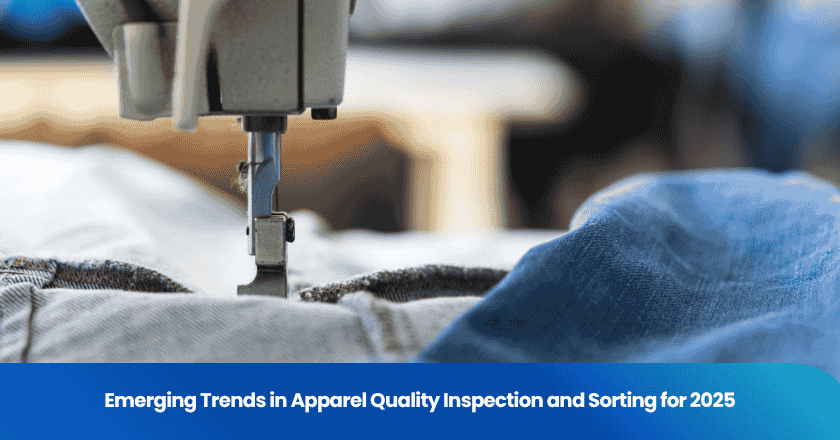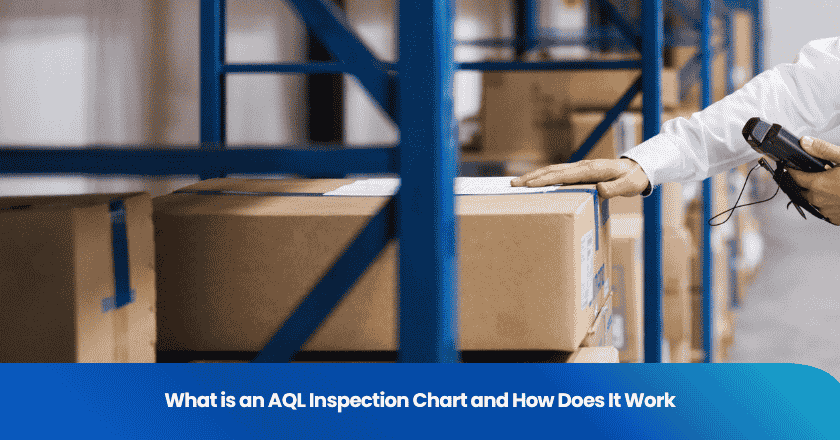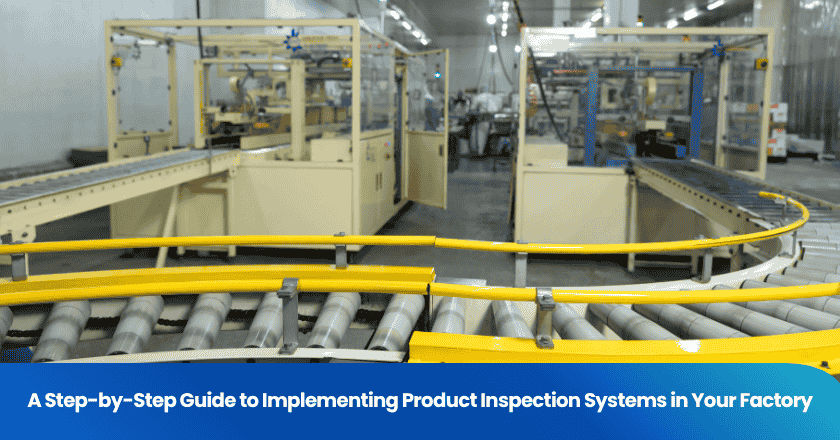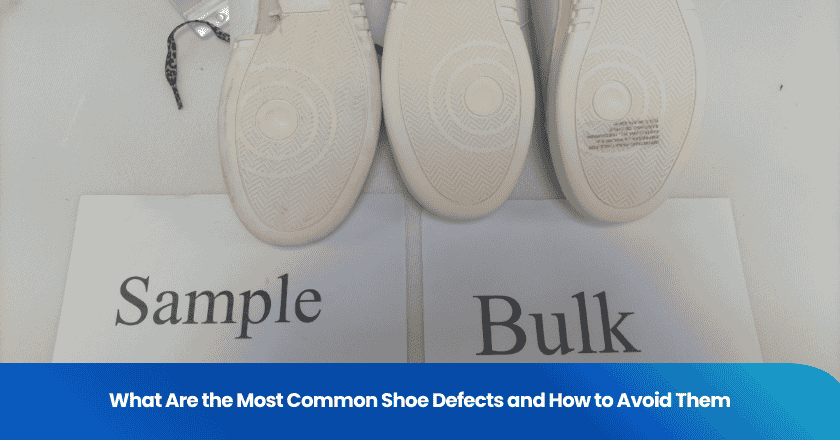
You see rapid changes shaping apparel quality inspections & sorting in 2025. Automated visual systems and advanced sensors now identify defects faster and more accurately, meeting high consumer demands for flawless and sustainable textiles. AI and automation drive operational efficiency, while environmental concerns push eco-conscious fashion and recycling initiatives. Sustainability and digital traceability strengthen transparency across the supply chain, reflecting major trends in the industry.
Key Takeaways
- AI and machine learning enhance defect detection in apparel, leading to a 35% reduction in defect rates and significant cost savings.
- Automated sorting systems improve efficiency, allowing factories to sort up to 800 units per hour, reducing manual labor and increasing accuracy.
- Sustainable textile innovations, like fiber-to-fiber recycling, help reduce waste and promote eco-friendly practices, supporting a circular economy.
- Digital traceability strengthens supply chain management, ensuring compliance and transparency, which builds consumer trust.
- Upskilling and human-machine collaboration are essential as automation reshapes job roles, requiring ongoing training to adapt to new technologies.
AI in Apparel Quality Inspections & Sorting
Machine Learning Defect Detection
You now see machine learning algorithms revolutionizing apparel quality inspections & sorting. These systems learn from thousands of fabric images, identifying defects that human eyes often miss. You benefit from advanced models like convolutional neural networks (CNNs) and YOLO, which analyze intricate patterns and spot flaws in real time.
You experience fewer errors and higher product yields. Manufacturers report a 35% reduction in defect rates, which leads to significant cost savings. Early detection minimizes rework and waste, supporting the latest trends in textile production automation.
Computer Vision
Computer vision technology now plays a central role in real-time quality inspection. High-resolution cameras paired with machine learning algorithms scan garments for imperfections at every stage. You rely on these systems to grade materials, identify defects, and even predict maintenance needs.
- AI-powered computer vision systems transform quality assurance in the ready-made garments industry.
- Real-time defect detection reduces manual inspection needs and speeds up textile production automation.
- Factories using AI report a 15-20% reduction in product defects.
- Automated quality assurance boosts overall quality control efficiency by 30%.
- AI systems achieve a 95% success rate in detecting fabric defects, outperforming human inspectors.
You gain faster feedback and improved consistency, which enhances customer satisfaction and supports the latest trends in apparel quality inspections & sorting.
Efficiency and Challenges
You notice measurable efficiency gains as AI tools automate repetitive tasks. Machines now handle fabric cutting, sorting, and sewing with greater speed and accuracy. You can track production speed and error rates, optimizing resource usage and reducing operating costs.
- AI-driven machines improve fabric cutting, reducing waste and speeding up sewing.
- Automation enhances production workflows and minimizes human error.
- Factories measure efficiency gains by tracking production speed and error rates.
Despite these benefits, you face several challenges when integrating AI into apparel quality inspections & sorting.
You must address these challenges to fully realize the benefits of automation and real-time quality inspection. By investing in training and data infrastructure, you can overcome barriers and stay ahead of industry trends.
Automated Sorting Systems
Robotics Integration
You see robotics transforming apparel sorting operations. Modern factories deploy robotic arms and autonomous mobile robots to handle garments with precision and speed. These systems use tray-based mechanisms and itemScanner technology, which minimize cycle times and boost throughput. You benefit from consistent performance, with robots sorting up to 800 units per hour across a wide range of fashion products. This versatility ensures that you can adapt quickly to changing production needs.
You notice that robotics integration not only increases accuracy but also reduces manual labor, allowing your team to focus on higher-value tasks.
Smart Sorting
You experience a new era of smart sorting in textile manufacturing. Advanced cameras and sensors powered by AI and IoT identify and categorize textiles by material composition. These systems distinguish between cotton, polyester, and blends, streamlining recycling and reducing errors. Automation in smart sorting lowers costs and speeds up processing, making your operations more sustainable. You contribute to a circular fashion economy by repurposing garments and minimizing landfill waste.
Process Optimization
You optimize your apparel sorting process by selecting the right automated system. Factories use line sorters, loop sorters, pouch sorters, and autonomous mobile robot sorters to match production demands. Loop and pouch sorters handle over 20,000 items per hour, while line sorters manage up to 10,000. Autonomous mobile robots offer scalable and space-efficient solutions for flexible layouts.
You implement strategies like automated order consolidation and modular scalability to enhance efficiency. Systems such as OPEX Sure Sort and Rapyuta ASRS automate sorting and returns, integrating new and returned stock seamlessly. You expand capacity with minimal downtime, ensuring your operations remain agile and responsive.
Tip: You can maximize efficiency by combining automation with modular systems, allowing for quick adaptation to market changes.
Sustainable Textile Innovations
You see sustainable textile innovations driving major changes in the apparel industry. These advancements help you reduce waste, support recycling, and promote eco-friendly practices. You notice that the latest trends focus on creating sustainable fabrics and improving textile recycling processes. You play a key role in building a circular economy by adopting new materials and recycling innovations.
Fiber-to-Fiber Recycling
You rely on fiber-to-fiber recycling to transform old garments into new, high-quality yarns. This process breaks fabrics down to their core fibers, allowing you to reuse materials without losing much of their original quality. You can choose between chemical and mechanical methods, both of which keep fibers in circulation for years.
Fiber-to-fiber recycling is different—it breaks fabrics down to their core fibers so they can be turned back into high-quality yarns. This process, which can be chemical or mechanical, allows clothing to be recycled without losing much of its original quality, meaning companies can potentially keep the same fibers in circulation for years.
You see several benefits when you implement fiber-to-fiber recycling:
- Transforming old, unwanted, or discarded fabrics into reusable materials reduces landfill waste.
- You promote sustainability by lessening the environmental impact of fashion.
- You keep textile items out of landfills and reduce the need for new materials like cotton and synthetic fibers.
You notice that fiber-to-fiber recycling supports sustainable fabrics and strengthens your commitment to sustainability. You help close the loop in textile recycling and contribute to the circular economy. You also see recycling innovations making it easier to process a wider range of materials.
Biodegradable Materials
You explore biodegradable materials as a solution to environmental challenges in apparel production. You find that clothing brands now use biodegradable synthetics, offering eco-friendly alternatives to traditional garments. You see biodegradable fibers used in medical textiles, such as surgical sutures and wound dressings, because they decompose safely.
You also observe the development of biodegradable polyesters and polyamides. These materials address environmental concerns and support sustainable textile innovations. You choose sustainable fabrics that break down naturally, reducing the long-term impact on the environment.
- Clothing brands are increasingly using biodegradable synthetics, providing eco-friendly alternatives to traditional garments.
- Biodegradable fibers are being utilized in medical textiles, such as surgical sutures and wound dressings, due to their safe decomposition.
- The development of biodegradable polyesters and polyamides is significant for sustainable textile production, addressing environmental concerns.
You recognize that biodegradable materials align with the latest trends in sustainability and help you meet consumer expectations for responsible fashion.
Waste Reduction
You focus on waste reduction as a core goal of sustainable textile innovations. You implement fiber-to-fiber recycling and select sustainable fabrics to minimize production waste. You see that textile recycling keeps materials in use and reduces the need for new resources.
You adopt practices that support the circular economy, such as reusing fibers and choosing biodegradable materials. You notice that these strategies lower your environmental footprint and improve your brand reputation. You also see that waste reduction aligns with industry trends and helps you meet regulatory requirements.
You understand that sustainable textile innovations, including fiber-to-fiber recycling and biodegradable materials, drive progress in waste reduction. You stay ahead of trends by investing in new technologies and supporting recycling innovations. You help shape a more sustainable future for the apparel industry.
Digital Traceability & Textile Industry Trends
Supply Chain Tracking
You now rely on digital traceability to strengthen supply chain management in apparel quality inspections & sorting. Advanced solutions connect partners across the textile industry, allowing you to track materials from origin to finished product. You see automated tracing and embedded IDs in fibers, which help you verify the journey of each garment and maintain high standards. These systems support environmental goals and sustainability by ensuring that materials meet compliance requirements.
Blockchain Applications
You see blockchain technology transforming traceability in the textile industry. Blockchain records every step in the supply chain, giving you reliable access to product data. You can verify the origin and movement of materials, which improves transparency and supports sustainability. Blockchain also reduces fraud and automates compliance, helping you meet environmental standards.
You notice that blockchain supports circular economy initiatives and creates digital twins, which allow consumers to view product histories and boost trust.
Transparency Benefits
You benefit from increased transparency in supply chain management. You can trace materials to compliant sources, which protects your reputation and supports environmental responsibility. You see improved brand reputation and operational resilience, which help you stand out in competitive markets.
- Enhanced traceability of materials to compliant sources, protecting brands from negative associations.
- Improved brand reputation through ethical operations, which can differentiate them in competitive markets.
- Compliance with increasingly complex regulations, ensuring operational resilience.
- Fostering consumer trust and loyalty among ethically conscious consumers.
You observe a 70% increase in searches for sustainable fashion, showing that consumer demand for ethical products is rising. You position yourself to capture market share by investing in transparency and following textile industry trends.
Apparel Recycling Trends
Market Growth
You see rapid growth in the apparel recycling market as global environmental concerns rise. The textile industry trends show a strong shift toward circularity, with more companies and consumers seeking sustainable solutions. Apparel generates significant textile waste, and fast fashion increases post-consumer waste. You notice that consumer demands for sustainable clothing drive this expansion.
- The textile recycling market is predicted to reach 11.88 billion USD by 2030.
- Online channels accelerate growth in textile recycling.
- More brands now offer upcycled or recycled products.
These trends reflect a broader movement in the textile industry, where sustainability and environmental responsibility take center stage.
Sorting for Reuse
You rely on advanced sorting technologies to improve the reuse of apparel materials. Color and pattern recognition help you make decisions about recycling or reusing garments. Texture and wear analysis assess the condition of each item. Fiber composition identification distinguishes between natural and synthetic fibers, which is crucial for recycling.
- Near-infrared (NIR) spectroscopy identifies fiber types like cotton, polyester, and wool.
- Computer vision detects patterns, colors, and damage levels.
- Machine learning algorithms increase sorting accuracy by learning from past data.
- Robotic actuators automatically categorize textiles for reuse or recycling.
Recycling textiles prevents waste from reaching landfills and reduces the demand for raw materials. You help conserve water and energy, supporting environmental goals and creating local jobs.
Consumer Awareness
You observe a rise in consumer awareness about apparel recycling. Emotional connections to clothing, such as nostalgia, increase willingness to recycle. Growing awareness of environmental issues also drives interest in recycling, as consumers seek responsible practices. Technology and effective messaging play a key role in educating the public. You see that demand for long-lasting, high-quality products continues to grow. Celebrity endorsements further boost awareness and shape new textile industry trends.
Note: You can leverage these insights to align your business with evolving consumer expectations and sustainability goals.
Workforce Transformation
Upskilling
You face a rapidly changing landscape in apparel quality inspection and sorting. Upskilling has become essential as new technologies reshape job roles. You now access AI training modules that use simulations and augmented reality, making learning interactive and efficient. These programs adapt to your skill level, offering personalized experiences and reducing the time and cost of traditional training.
- You can master 3D apparel design and integration.
- You learn Gerber pattern making and grading.
- You gain expertise in product development, sourcing, and manufacturing.
You see that upskilling prepares you to work alongside advanced systems, such as AI-powered machine vision and robotic inspection tools. These innovations identify defects like misweaves, stains, and color inconsistencies, requiring you to understand both technology and textile fundamentals.
Human-Machine Collaboration
You experience a shift in your daily responsibilities as human-machine collaboration becomes the norm. AI systems automate repetitive tasks, freeing you to focus on strategic decision-making. Automated quality checks reduce human error and maintain consistent product standards. You monitor supplier performance more effectively, increasing transparency throughout the supply chain.
Real-time quality control with AI cameras detects errors quickly, minimizing waste and labor costs.
You work with robots that optimize fabric cutting and stitching, enhancing accuracy and speed. Reskilling and upskilling remain vital as you transition to new roles in smart manufacturing. You notice that these trends improve product development speed and minimize sizing errors, leading to better customer satisfaction.
Labor Challenges
You encounter several labor challenges as automation becomes widespread. The pool of skilled workers continues to decline, partly because younger generations prefer technology and service-oriented careers. Experienced workers retire, and the loss of institutional knowledge creates gaps in skilled roles.
- Rising labor costs strain budgets, especially for small businesses.
- Delayed deliveries and inconsistent quality result from the shortage of skilled workers.
- The perception of garment jobs as physically demanding with limited advancement opportunities discourages new entrants.
You recognize that addressing these challenges is crucial for maintaining productivity and supporting environmental goals. Workforce transformation remains a key factor in adapting to industry trends and ensuring long-term success.
You see major trends shaping apparel quality inspections & sorting, including AI-driven efficiency, automated sorting, and sustainable textile industry trends. You can adapt by integrating AI and automation, embracing micro-factories for agility, and focusing on environmental responsibility.
- Real-time supply chain monitoring and optimization support your transition to new technologies.
- Transparency grows through digital product passports, forensic tracers, and worker empowerment platforms.
You strengthen your position by mapping supply chains and sharing data, aligning with evolving textile industry trends and environmental goals.
FAQ
What are the main benefits of AI in apparel quality inspection?
You gain faster defect detection and improved accuracy. AI systems help you reduce manual errors and increase production speed. These tools support higher product quality and boost customer satisfaction.
How do automated sorting systems improve efficiency?
You use robotics and smart sorting to handle garments quickly. Automated systems sort thousands of items per hour. You optimize your workflow and reduce labor costs, which helps you keep up with industry trends.
Why is sustainable textile innovation important?
You help reduce waste and support recycling by choosing sustainable fabrics. Innovations like fiber-to-fiber recycling and biodegradable materials protect the environment. You meet consumer expectations and follow the latest trends in responsible fashion.
How does digital traceability benefit the apparel industry?
You track materials from origin to finished product. Digital traceability ensures compliance and transparency. You build trust with consumers and respond quickly to market changes.
What challenges do you face with workforce transformation?
You must upskill to work with new technologies. Automation changes job roles and requires ongoing training. You address labor shortages and adapt to evolving industry needs.
Grow your business with TradeAider Service
Click the button below to directly enter the TradeAider Service System. The simple steps from booking and payment to receiving reports are easy to operate.



